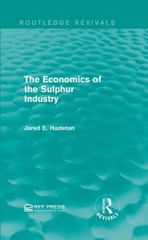1. (25 points). In class we discussed one reason why Americans might work more than Europeans. This question explores one reason why Americans might work less than Chinese people. Suppose the preferences of Americans and Chinese are the same, and are given by U(C N): aC 02 151v? ' N 2 where 0 stands for consumption of market goods, N stands for (weekly) hours worked, and (a, B) are xed parameters, which are the same in the USA and China. Assume both countries are competitive, and output is produced by rms using the linear production function Y = 2N where N denotes labor input and 2 denotes productivity. For simplicity, assume there is no government, 0r non-labor income. (a) Assuming the market (real) wage is w, derive expressions for the household's consumption and labor supply decisions as a function of w. (Hint: Note that in terms of N, the household's budget constraint is C = wN and its Optimality condition is UN/UC = w). Sketch a plot of the labor supply curve. Does the income effect ever dominate the substitution effect? If so, at what wage is labor supply maximized? (b) Derive an expression for the rm's labor demand curve, and illustrate it in a graph, along with the labor supply curve. What is the market equilibrium wage rate? (c) Assume that a = 20 and [3 = 2 in both countries. However, assume that the USA is more productive. Specically, suppose z = 16 in the USA and z = 8 in China. Compute the equilibrium (weekly) hours of work in each country. Finally, suppose z is growing at 7% in China, but only at 1% in the USA. How long will it be before Chinese labor supply matches the USA? 2. (25 points). Consider a subsistence farmer who can produce food, Y, according to the production functi0n, Y = z N, where N denotes the hours of work he does. Suppose this farmer also values leisure in addition to food, and has h total hours of time available per period. (a) Draw the farmer's production possibilities frontier, and use it to illustrate his optimal choice of food and leisure. (For simplicity, ignore the fact that there might be some miinimum amount of food required to live!) (b) Now suppose a factory opens up nearby, giving him the opportunity to work for a xed wage rate, which he can then use to buy his food in the town market. Draw a picture illustrating the minimum wage required to induce him to leave farming and work in the factory. Assuming a farmer decides to take a job in a factory, does he work more or less than before? Explain intuitively. ((3) Do you think this picture has any relevance for developing countries like China








